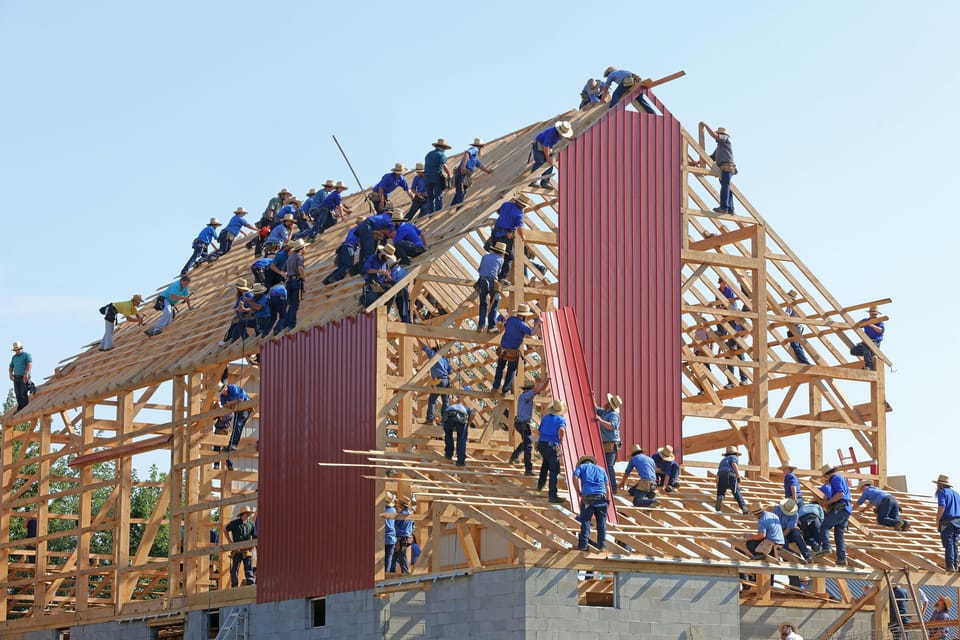What do high-performance teams need from their virtual space (that they're not getting from existing tools)?

Whose Space is it Anyway?
What do you do right after you rent a new space?
You move in!
You bring your stuff and arrange it the way you want to.
You do it for yourself mostly, but you also don’t mind to show it off to friends and colleagues. Perhaps bond over a shared love of Dune when they see it on your bookshelf.
High-performance teams are not staffed by interchangable robots. We’re each allowed and expected to bring our unique skill and perspective to benefit the team and the people it’s serving.
That’s why I believe a high-level of customization is needed. Not only for dry practical purposes but with a bit of aesthetics and cultural expression.
For your team in your context:
- What do we like?
- What do we value?
- What is most important here?
Don’t just talk about it. Show it!
Make The Work Visible (and configure your space around that work)
In a typical creative knowledge work office what we can see, hear and touch (and in extreme cases also smell) is people walking around, sitting at desks and talking to each other.
But what are they working on?
Are they building software?
What kind of software?
Who is it for?
How is it working for them?
All that is hidden in various tools that we can interact with through our screens.
When designing a virtual environment for a high-performance team — why try to replicate the most boring and irrelevant, or even hated, parts of legacy office spaces?
We should be able to make the work clearly visible and configure our space to suit the actually important aspects of that work!
Situational Awareness
The Agile community popularized the concept of information radiators. Various types of boards, posters and dashboards that communicate key information making it not only accessible on demand (click-link, wait several seconds, scroll, absorb) but also available at a glance and ambiently discoverable!
Some high-performance teams went much further.
Think government/military situation rooms or space mission control:

When moving online every team can enjoy this level of support for their high-stakes, in-the-moment decision making.
Foster a learning culture
The most common way people learn is by modeling the behavior of others (experienced team mates, masters in our domain, leaders in our org).
When we’re working remotely it’s much harder to observe how people behave.
But there’s also good news: in our computer-enabled economy the key decisions are made on screens with keyboards and mice, so being able to see someone at their desk is not much of an advantage.
Online we have the opportunity to make what really matters more visible, so that when it works it can be repeated, copied and amplified and when it doesn’t it can be corrected or reimagined.
To enable a learning culture in a distributed setting we need to make key aspects of the actual work visible.
Not just the people doing it.
Corner office for everyone
Not all work is urgent, high-preassure and tightly integrated with real time feedback loops.
Sometimes we need a protected space to do some deep work in or to have a quiet conversation with someone.
Of course we could have h a regular Zoom call, but how might we make it better?
How can we set the stage for a deep discussion?

Virtual backgrounds are cool, but they’re one sided. We should have a way to create an environment that is both optimized to evoke a certain mindset or tone of conversation as well as one that can be shared by both participants. Preferably with an ability to look at what the conversation is about.
Focus is more important than clock-time
High-performance distributed teams need to be able to easily and reliably see the meaningful aspects of each other’s status and activity — enough to make key decisions but not too much that it would obfuscate more than illuminate or intrude on that person’s privacy.
For example — focus mode:
- who’s available to talk right now?
- who’s in a meeting and when will they be done?
- who’s trying to focus on some deep work (and should not be interrupted without a good reason) and when will they be done?
- who’s out for the day and when will they be back?
Communication needs to adapt to the situation, not overwhelm it
A way to communicate that is high-bandwidth, flexible (combining various channels) but also adapts to what the team needs in terms of focus and interactions.
For example:
If I’m in a meeting or focus bubble right now — schedule other messages from teammates to be delivered after the bubble pops — and when it does, deliver it using my preferred method (email, slack, …).